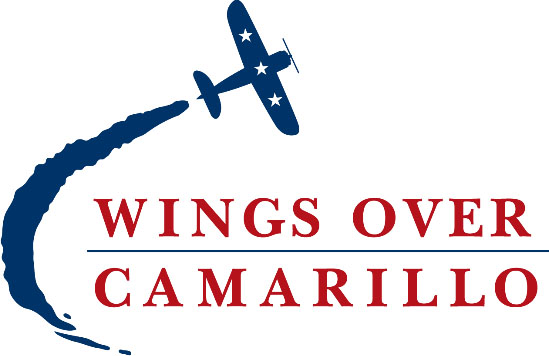Stunt plane flying, often referred to as aerobatics or aerobatic flying, is a mesmerizing and heart-pounding display of precision, skill, and sheer bravery in the world of aviation. It is an art form that combines the grace of flight with the adrenaline rush of extreme maneuvers, captivating audiences worldwide. In this 3000-word article, we will delve deep into the fascinating world of stunt plane flying, exploring its history, the aircraft used, the training required, and the awe-inspiring maneuvers that leave spectators in awe.
The History of Stunt Plane Flying
Stunt plane flying, as we know it today, has a rich history that dates back to the early days of aviation. Here, we’ll explore the origins and evolution of this thrilling aerial sport.
The Birth of Aerobatics
- The pioneers of aerobatics: Names like Louis Blériot and Adolphe Pegoud
- World War I: The birth of combat aerobatics
The Interwar Years
- Barnstorming and the emergence of airshows
- Notable pilots: The legends of the Golden Age of Aviation
Post-World War II Advancements
- The influence of military training on aerobatics
- Introduction of purpose-built aerobatic aircraft
Modern Era and Competitive Aerobatics
- Formation of aerobatic organizations
- The rise of competitive aerobatics: World Aerobatic Championships
The Anatomy of Stunt Planes
To perform breathtaking aerobatic maneuvers, pilots need specialized aircraft designed for these high-stress situations. In this chapter, we’ll explore the characteristics of stunt planes.
Purpose-Built Aerobatic Aircraft
- Design principles: Lightweight, strong, and maneuverable
- Common types of aerobatic planes: Examples and specifications
Key Features of Aerobatic Aircraft
- High thrust-to-weight ratio
- Responsive control surfaces
- Structural integrity and safety features
Evolution of Aerobatic Aircraft
- Technological advancements in materials and design
- The transition to composite materials
The Pilots Behind the Thrills
Stunt plane flying is not for the faint of heart. This chapter focuses on the remarkable individuals who dedicate their lives to mastering the art of aerobatics.
Becoming an Aerobatic Pilot
- Training and certifications required
- The role of flight schools and aerobatic training centers
Skills and Qualities of Aerobatic Pilots
- Exceptional spatial awareness
- Physical and mental endurance
- Risk management and safety consciousness
Famous Aerobatic Pilots
- Highlighting the accomplishments of renowned aerobatic aviators
- Their contributions to the sport and aviation as a whole
The Spectacle of Aerobatic Maneuvers
Aerobatic maneuvers are the heart and soul of stunt plane flying. This chapter delves into the breathtaking, gravity-defying moves that thrill audiences around the world.
Basic Aerobatic Maneuvers
- Loop-the-loop
- Barrel roll
- Immelman turn
- Hammerhead turn
Intermediate Maneuvers
- Cuban eight
- Knife-edge flight
- Snap roll
- Chandelle
Advanced and Signature Maneuvers
- Inverted flat spin
- Pugachev’s Cobra
- Lomcovak
- Tailslide
The Thrill of Aerobatic Competitions
Competitive aerobatics is a prestigious arena for showcasing pilot skill and precision. In this chapter, we explore the world of aerobatic competitions, including major events and judging criteria.
Major Aerobatic Competitions
- The World Aerobatic Championships
- National championships and airshow contests
- The Red Bull Air Race
Judging Criteria
- Presentation and showmanship
- Precision and accuracy
- Difficulty and variety of maneuvers
Challenges and Rewards of Competitive Aerobatics
- The physical and mental demands on pilots
- The sense of camaraderie among competitors
- The rewards and recognition for champions
The Future of Stunt Plane Flying
In this final chapter, we explore the current trends and future prospects of stunt plane flying, considering technological advancements, safety measures, and its role in modern aviation.
Technological Advancements
- Fly-by-wire systems and computer-assisted flight
- Electric and hybrid aerobatic aircraft
- Virtual reality and simulators in pilot training
Safety and Regulation
- The role of aviation authorities in ensuring safety
- Advances in pilot safety equipment
- Encouraging responsible aerobatics
The Continuing Legacy of Stunt Plane Flying
- Its influence on aviation entertainment
- Inspiring future generations of pilots
Conclusion
Stunt plane flying is a captivating blend of history, technology, skill, and sheer daring. From its humble beginnings to the competitive world stage, this thrilling aviation discipline has continued to evolve and inspire both pilots and spectators alike. As we look to the future, it’s clear that the skies will remain a canvas for these daring artists to create their mesmerizing masterpieces. Whether you’re a die-hard aerobatics enthusiast or just someone who appreciates the beauty of flight, stunt plane flying is a spectacle that will continue to amaze and astonish for years to come.
